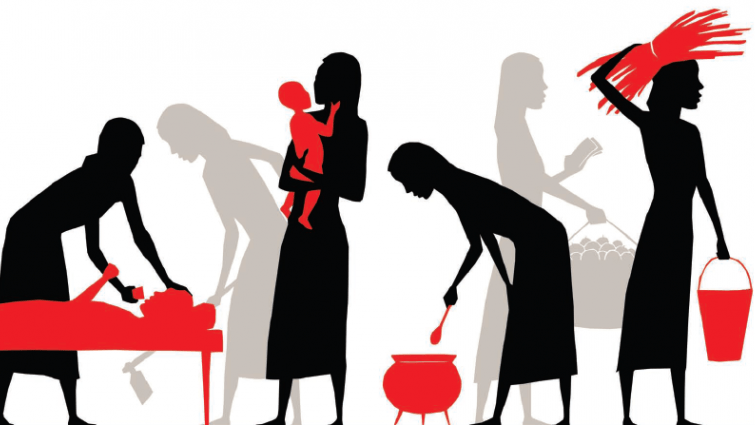Patriarchy & Sexual Division of Labour
Relevant for sociology optional Paper- 1 (Unit- 9 : Sociology- Systems of Kinship)

Patriarchy and the sexual division of labour are important concepts in sociology that help us understand the ways in which gender shapes social and economic systems. Patriarchy refers to the social system in which men hold power and authority over women, and it is characterized by the oppression and subordination of women. The sexual division of labour refers to the way in which work is divided along gender lines, with men and women performing different types of work based on their gender. In this article, we will explore the concepts of patriarchy and the sexual division of labour in more detail and their significance in Indian society.
In India, patriarchy and the sexual division of labour are deeply entrenched in the social and cultural fabric of society. Women are expected to take care of the household and children, while men are expected to be the breadwinners and hold positions of power and authority. This division of labour is based on the idea that men are inherently better suited for certain types of work, such as physical labour and leadership positions, while women are better suited for domestic work and caretaking.
The sexual division of labour has significant implications for the economic and social status of women in India. Women are often relegated to low-paying and low-skilled jobs, such as domestic work and agricultural labour, which are undervalued and provide little opportunity for upward mobility. Women also face discrimination and harassment in the workplace, which can limit their opportunities for advancement and economic security.
The patriarchy in Indian society is reflected in the unequal representation of women in positions of power and authority. Women are severely underrepresented in politics, with only 22% of seats in the Lok Sabha, the lower house of parliament, held by women. Women are also underrepresented in the corporate world, with only 7% of CEOs in India being women.
Patriarchy also manifests itself in the form of gender-based violence and discrimination. Women in India face high rates of domestic violence, sexual assault, and harassment, and there is a pervasive culture of victim-blaming and shaming that further perpetuates the cycle of violence. Discrimination based on gender also leads to unequal access to education, healthcare, and other basic rights and services.
Efforts to challenge patriarchy and the sexual division of labour in India have been ongoing for decades. Feminist movements and women’s rights organizations have advocated for gender equality and the empowerment of women, and there have been legislative measures put in place to address issues such as domestic violence and discrimination. However, these efforts have been met with resistance from traditional and conservative elements in society, who argue that gender roles are natural and that women’s place is in the home.
To create a more just and equitable society in India, it is essential to challenge the patriarchal system and promote gender equality. This requires addressing issues such as gender-based violence, discrimination, and unequal access to resources and opportunities. It also requires changing the way in which we think about gender roles and the division of labour, and promoting more inclusive and diverse perspectives on what it means to be a man or a woman in society.
In conclusion, patriarchy and the sexual division of labour are significant issues in Indian society that have far-reaching implications for the economic, social, and political status of women. The traditional gender roles that have been assigned to men and women are deeply ingrained in the cultural and social fabric of Indian society, and challenging them requires a concerted effort to promote gender equality and empower women. By working towards a more inclusive and equitable society, we can create a future in which everyone has the opportunity to thrive and succeed, regardless of their gender or other social identities. Efforts to promote gender equality and challenge patriarchy must be comprehensive and involve multiple levels of society, from grassroots activism to policy and legislative change. It is important to engage men and boys in this process, as they also play a critical role in perpetuating or challenging patriarchal norms and practices. Through education, awareness-raising, and advocacy, we can work towards a future in which gender equality is not just a buzzword but a lived reality for all people in Indian society. By valuing and respecting the contributions of women and challenging gender stereotypes, we can create a society that is more just, inclusive, and equitable for all.
For more such notes, Articles, News & Views Join our Telegram Channel. https://t.me/triumphias
Click the link below to see the details about the UPSC – Civils courses offered by Triumph IAS. https://triumphias.com/pages-all-courses.php


